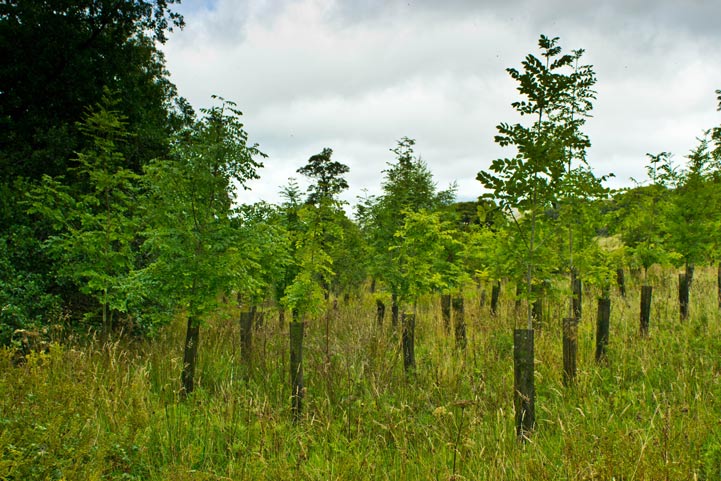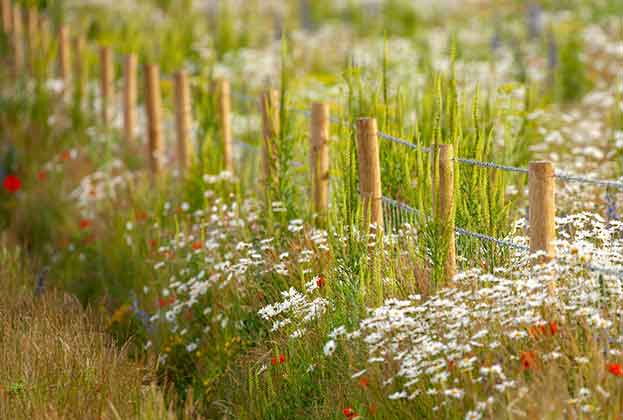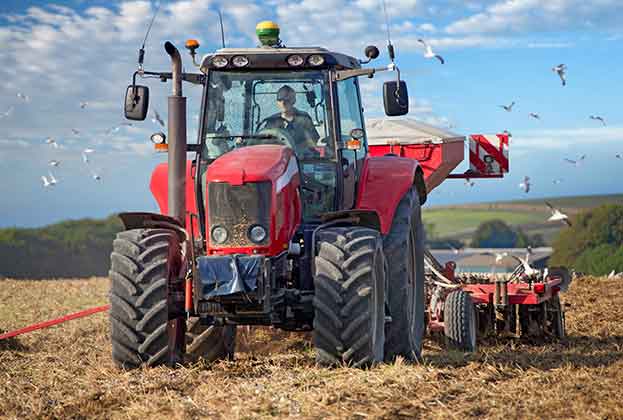The marketplace is beginning to put a price on the value of nature’s resources
Mark Carney, the former governor of the Bank of England, said that many of nature’s resources are not valued unless they have a price tag attached. With the nascent nature-based solutions marketplace, we are beginning to gather more evidence of what these natural resources might be worth. Comparables are slowly emerging as the markets mature.

Alphotographic / iStock
1. VOLUNTARY CARBON MARKET
The value of the global voluntary carbon market nearly quadrupled in 2021 compared to 2020 and is now worth approximately two billion dollars. It has been estimated that this market needs to grow by more than 15-fold by 2030 in order to support the investment required to deliver the Paris Agreement. The London Stock Exchange has recently launched a voluntary carbon market in order to accelerate the availability of financing for carbon reduction projects, demonstrating the appetite to scale this marketplace.
The Woodland Carbon Code (WCC) and Peatland Carbon Codes (PCC) are the recognised accreditation and verification standards for woodland creation and peatland restoration projects in the UK.
- As of June 2022, there are in total 1,640 WCC projects covering 61,419 hectares, which equates to 86,000 football pitches.
- There are currently 55 PCC projects in the UK.
Putting a price on carbon
Not all carbon is the same and it is important, to know what you are buying (or selling).
- Across the past five Woodland Carbon Guarantees in England, which set a government-backed price for woodland carbon, the average price for woodland carbon credits was £20.69 per tonne CO2e.
- According to Ecosystem Marketplace, across the globe voluntary carbon prices for forestry and land use carbon credits increased to just under £5 per tonne CO2e in 2021, which is a 4% increase on 2020 prices and a 34% increase on 2019 prices.
- Significantly higher prices are paid for projects that deliver additional societal and environmental benefits.
According to the latest report from Ecosystem Marketplace, the value of the global voluntary carbon market nearly quadrupled in 2021 compared to 2020
Emily Norton, Head of Rural Research
It is likely that carbon prices will continue to increase as businesses come under more pressure to decarbonise – research supported by the World Bank has argued that the carbon price needs to be closer to £90 per tonne CO2e by 2030 to reach the goals of the Paris Agreement.
Sell now or later?
For farmers looking to participate in carbon markets, the question should be whether the current market price meets their needs for investment; there is no guarantee that prices will go up as technology to remove carbon from the atmosphere may be proven at scale in the next 10-20 years.
2. BIODIVERSITY MARKET
Biodiversity net gain (BNG)
Despite being one of the most regulated markets for nature-based solutions, BNG deals are taking time to emerge. This is in part because BNG is not yet mandatory for developers, but also because the government has run multiple consultations on the practicalities of delivering the policy. From limited market evidence, we see a wide variance in Biodiversity Unit prices (from £10,000 to £50,000 per unit). Once it becomes a legal requirement, we are likely to see demand and corresponding values take off. However, the market does have a limited size as it is only applicable to England and developers are the gatekeepers to demand.
- The market for offsite biodiversity units in England is estimated to be worth between £135 million to £274 million per year.
A global biodiversity market
The voluntary biodiversity market may, in the long run, offer land managers greater potential. As more organisations are required to disclose and offset their impact on nature in line with the Taskforce on Nature-related Financial Disclosures (see page 9), a voluntary market for biodiversity credits is likely to grow. There are several initiatives underway to design and test biodiversity credits – “sustainable development units” in New Zealand, “voluntary biodiversity credits” in Colombia and “EcoAustralia” TM credits.
3. NUTRIENT NEUTRALITY
Comparables are still hard to come by for nutrient credit trading given the nascent state of the market.
- Indicative values have been published suggesting nutrient credits could be worth from £2,500 to as much as £150,000 per kg, paid to the landowner as a one-off fee.
- However, given that offsetting schemes are site-specific, it may be that values are based on the ability to unlock development and could be between £5,000-£10,000 per property built.
- The offsetting pathway for phosphates and nitrates is different, with phosphates harder to remove. Schemes that offer effective phosphate removal may prove to be worth more.
What impact is the transition to nature-based solutions having on land values?
Land values have been tracking up in recent months, despite the turmoil of the agricultural transition. One of the key reasons for this is competition between traditional buyers of land and new investors seeking land on which to deliver nature-based solutions, such as tree planting and regenerative agriculture. The value of poor livestock land, most suitable for woodland creation and renewable energy, has increased 13% since September 2021, outperforming increases across all other land types. The core challenge with considering land values in the context of the ability to deliver nature-based solutions is to ensure that the potential to realise a capital gain (such as through sequestering carbon) is distinct from the potential to generate long-term income returns (such as through managing flood risk). It could be argued that it is only the latter that should truly be priced into the value of land.

angel217 / Shutterstock
MAXIMISING VALUE
The key to really profitable rural businesses is layering different enterprises on top of each other. There are two approaches that land managers might take relating to nature-based solutions. The first is “stacking”, where different beneficiaries of nature-based solutions invest in different services from the same piece of land. Provided each service is “additional” to the next, this should be feasible. A good example might be selling soil carbon storage to a supply chain, over which a species-rich meadow is managed for a water company, cattle grazed for a local farm shop and public access offered through a local health scheme. The other route is pricing one service to include the advantages of another. Known as “charismatic” pricing, different co-benefits can be bundled together and sold as one higher-value service. Often, customers prefer projects with a story and identity to them. Land managers can make use of their negotiating power when it comes to determining the value of their nature-based solutions.
Read the articles within Spotlight: Nature-based solutions below.
.jpg)


